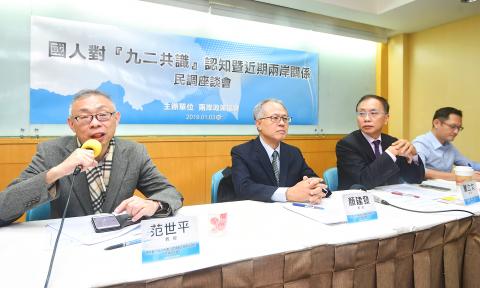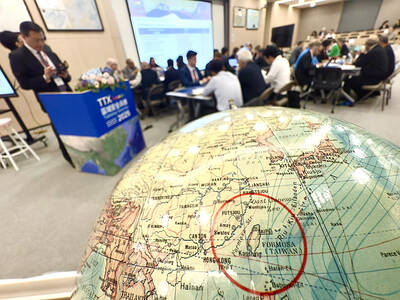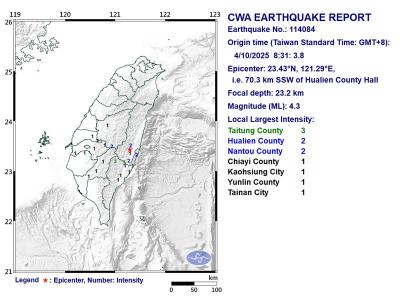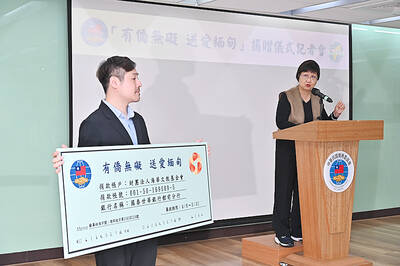More than 80 percent of Taiwanese would not accept the so-called “1992 consensus” if it meant supporting the “one China” principle, with “China” representing the People’s Republic of China (PRC), a Cross-Strait Policy Association poll showed yesterday.
The association published the poll one day after Chinese President Xi Jinping (習近平) gave a speech marking the 40th anniversary of the 1979 “Message to Compatriots in Taiwan.”
While promoting the “one county, two systems” formula, Xi said the “1992 consensus” means that “both sides of the Taiwan Strait belong to one China and will work jointly to seek national unification.”

Photo: Fang Pin-chao, Taipei Times
The “1992 consensus” — a term former Mainland Affairs Council chairman Su Chi (蘇起) admitted making up in 2000 — refers to a tacit understanding between the Chinese Nationalist Party (KMT) and the Chinese Communist Party that both sides acknowledge there is “one China,” with each side having its own interpretation of what “China” means.
Of the respondents, 84.1 percent said they would not accept the “1992 consensus” if it means supporting the idea of the PRC representing “China,” with no room left for the Republic of China (ROC), while 9 percent said they would.
Of those polled, 81.2 percent said they would not accept the “1992 consensus” if it promotes economic development at the cost of sovereignty and turns the ROC into a local government under Beijing’s control, the poll found.
Of the respondents, 54.2 percent supported reading the “1992 consensus” as meaning that each side has its own interpretation of what “China” means, with “one China” meaning the ROC.
When asked whether the “1992 consensus” is real, 45.1 percent of respondents said “no,” while 36.2 percent said “yes.”
Regarding the content of the “1992 consensus,” 55.5 percent said they did not have a clear understanding of it, while 40.2 percent said they did.
When asked to choose a definition of the “1992 consensus” that was closest to their understanding, 44.4 percent said that it means both sides of the Taiwan Strait are two different countries, while 20.9 percent said the two sides represent part of a yet-to-be-unified nation.
Of the respondents, 20.6 percent said it means each side claims to represent “China,” with 7.1 percent saying the ROC is a local government belonging to the PRC.
The poll also found that 62.6 percent of respondents approved of the government’s position respecting the historical fact that in 1992 a meeting occurred between the two institutions representing each side of the Taiwan Strait — Taiwan’s Straits Exchange Foundation and China’s Association for Relations Across the Taiwan Straits — while 28 percent disapproved.
Meanwhile, 64.1 percent of respondents said they did not agree with the statement that people do not need to know what the “1992 consensus” is as long as it brings economic benefits to Taiwan, while 91.7 said they believed that national security is as important as economic development.
The poll was conducted by telephone on Thursday and Friday last week, with 1,081 valid samples, a 2.98 point margin of error and a confidence level of 95 percent, the association said.

DEFENSE: The National Security Bureau promised to expand communication and intelligence cooperation with global partners and enhance its strategic analytical skills China has not only increased military exercises and “gray zone” tactics against Taiwan this year, but also continues to recruit military personnel for espionage, the National Security Bureau (NSB) said yesterday in a report to the Legislative Yuan. The bureau submitted the report ahead of NSB Director-General Tsai Ming-yen’s (蔡明彥) appearance before the Foreign and National Defense Committee today. Last year, the Chinese People’s Liberation Army (PLA) conducted “Joint Sword-2024A and B” military exercises targeting Taiwan and carried out 40 combat readiness patrols, the bureau said. In addition, Chinese military aircraft entered Taiwan’s airspace 3,070 times last year, up about

Taiwan is stepping up plans to create self-sufficient supply chains for combat drones and increase foreign orders from the US to counter China’s numerical superiority, a defense official said on Saturday. Commenting on condition of anonymity, the official said the nation’s armed forces are in agreement with US Admiral Samuel Paparo’s assessment that Taiwan’s military must be prepared to turn the nation’s waters into a “hellscape” for the Chinese People’s Liberation Army (PLA). Paparo, the commander of the US Indo-Pacific Command, reiterated the concept during a Congressional hearing in Washington on Wednesday. He first coined the term in a security conference last

A magnitude 4.3 earthquake struck eastern Taiwan's Hualien County at 8:31am today, according to the Central Weather Administration (CWA). The epicenter of the temblor was located in Hualien County, about 70.3 kilometers south southwest of Hualien County Hall, at a depth of 23.2km, according to the administration. There were no immediate reports of damage resulting from the quake. The earthquake's intensity, which gauges the actual effect of a temblor, was highest in Taitung County, where it measured 3 on Taiwan's 7-tier intensity scale. The quake also measured an intensity of 2 in Hualien and Nantou counties, the CWA said.

The Overseas Community Affairs Council (OCAC) yesterday announced a fundraising campaign to support survivors of the magnitude 7.7 earthquake that struck Myanmar on March 28, with two prayer events scheduled in Taipei and Taichung later this week. “While initial rescue operations have concluded [in Myanmar], many survivors are now facing increasingly difficult living conditions,” OCAC Minister Hsu Chia-ching (徐佳青) told a news conference in Taipei. The fundraising campaign, which runs through May 31, is focused on supporting the reconstruction of damaged overseas compatriot schools, assisting students from Myanmar in Taiwan, and providing essential items, such as drinking water, food and medical supplies,